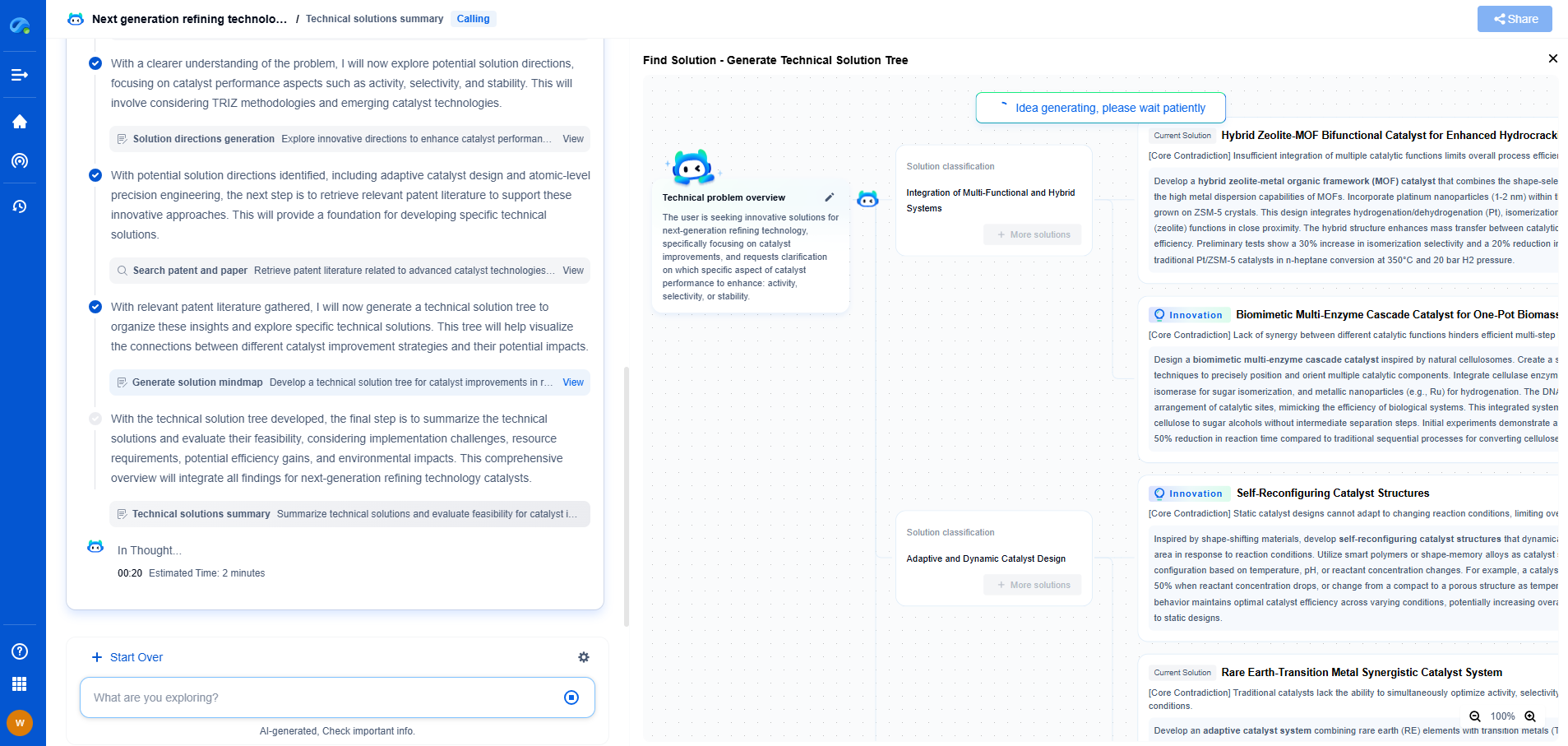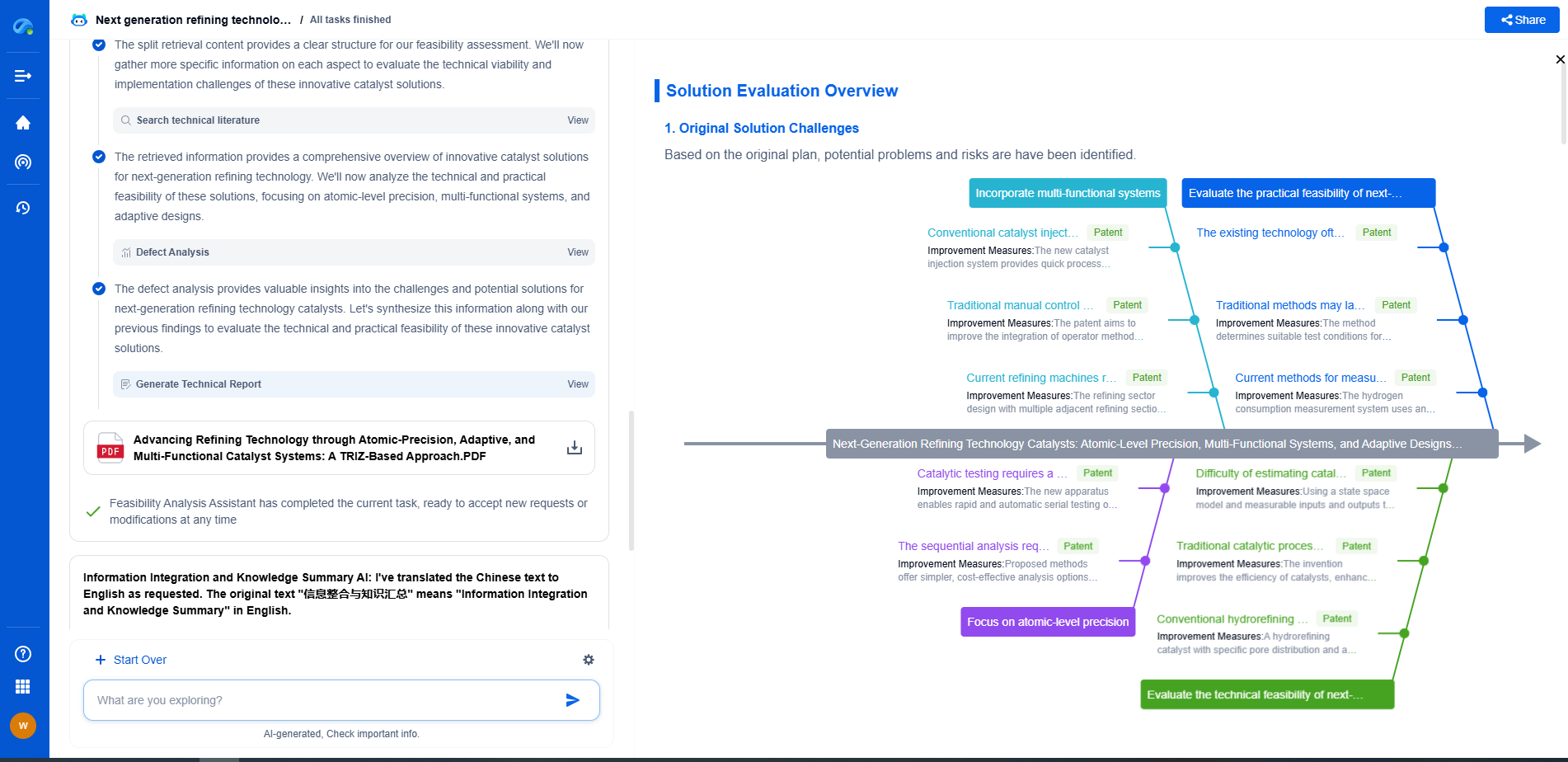What Is a Wind Turbine and How Does It Work?
JUN 26, 2025 |
Wind turbines are remarkable devices that harness the kinetic energy of the wind and convert it into electrical power. They are a key component in the growing field of renewable energy, offering a clean and sustainable source of electricity. By reducing reliance on fossil fuels, wind turbines help decrease greenhouse gas emissions and combat climate change.
How Wind Turbines Work
The basic principle behind a wind turbine is straightforward: it captures wind energy using blades that spin around a rotor. As the wind blows, it transfers some of its energy to the blades, causing them to rotate. This rotation turns a shaft connected to a generator, which then converts the mechanical energy into electrical energy. The electricity generated is then fed into the power grid or stored for later use.
Components of a Wind Turbine
1. **Rotor Blades**: The most visible part of a wind turbine, rotor blades are designed to capture wind energy efficiently. They are typically made from strong, lightweight materials like fiberglass-reinforced plastic or carbon fiber.
2. **Nacelle**: This is the housing that contains the generator, gearbox, and other essential components. It sits atop the tower and rotates to face the wind for optimal energy capture.
3. **Generator**: The generator is where the magic of conversion happens. As the rotor spins, it drives the generator to produce electricity.
4. **Gearbox**: This component increases the rotational speed of the shaft from the rotor to the generator, allowing the system to produce electricity more efficiently.
5. **Tower**: The tower elevates the blades and nacelle to a height where they can capture more consistent and powerful winds. Towers are usually made of steel and can range in height from 80 to 120 meters.
6. **Control System**: This system monitors wind speed and direction, adjusting the turbine's orientation and blade pitch to maximize efficiency and protect the turbine from damage during high winds.
Different Types of Wind Turbines
Wind turbines come in a variety of designs and sizes. The two main types are horizontal-axis wind turbines (HAWTs) and vertical-axis wind turbines (VAWTs).
- **Horizontal-Axis Wind Turbines (HAWTs)**: These are the most common type and feature a propeller-like rotor that turns on a horizontal axis. They are generally more efficient and are used in large-scale wind farms.
- **Vertical-Axis Wind Turbines (VAWTs)**: These turbines have a rotor that turns around a vertical axis. They are less common but can be effective in urban settings or areas with turbulent wind conditions due to their ability to capture wind from any direction.
The Benefits of Wind Energy
Wind energy offers numerous benefits, making it an attractive option for sustainable power generation. It's an inexhaustible resource, and generating electricity from wind produces no emissions or pollutants. Moreover, wind farms can coexist with farmland and do not require water for cooling, unlike traditional power plants. Wind energy also contributes to energy independence and can stimulate job creation in manufacturing, installation, and maintenance.
Challenges and Considerations
Despite its advantages, wind energy does face some challenges. Wind is an intermittent resource, meaning it doesn't blow consistently at all times. This variability can affect the stability of power supply, necessitating complementary technologies like energy storage or grid management solutions. Additionally, the installation of wind farms can have environmental impacts, such as affecting local wildlife or altering landscapes, which need careful planning and mitigation.
Conclusion
Wind turbines are a cornerstone of the transition to renewable energy. As technology advances and costs continue to fall, wind energy is poised to play an increasingly significant role in meeting global energy demands sustainably. By understanding how wind turbines work and their potential benefits and challenges, we can better appreciate the pivotal role they play in building a cleaner, greener future.
Empower Your Wind Power Innovation with AI
In the fast-evolving landscape of wind turbine technology—where aerodynamic optimization, generator efficiency, and structural innovation are critical—staying ahead requires more than just expertise. It requires intelligent tools that accelerate R&D and protect your competitive edge.
Patsnap Eureka is your AI-powered research assistant, designed specifically for innovators like you working at the forefront of Wind Motors. Whether you're analyzing blade design trends, exploring novel gearbox architectures, or navigating complex global patent landscapes, Eureka streamlines the entire process with precision and speed.
👉 Experience how Patsnap Eureka can revolutionize your R&D and IP strategy. Request a demo today and power up your next breakthrough.
- R&D
- Intellectual Property
- Life Sciences
- Materials
- Tech Scout
- Unparalleled Data Quality
- Higher Quality Content
- 60% Fewer Hallucinations
Browse by: Latest US Patents, China's latest patents, Technical Efficacy Thesaurus, Application Domain, Technology Topic, Popular Technical Reports.
© 2025 PatSnap. All rights reserved.Legal|Privacy policy|Modern Slavery Act Transparency Statement|Sitemap|About US| Contact US: help@patsnap.com

